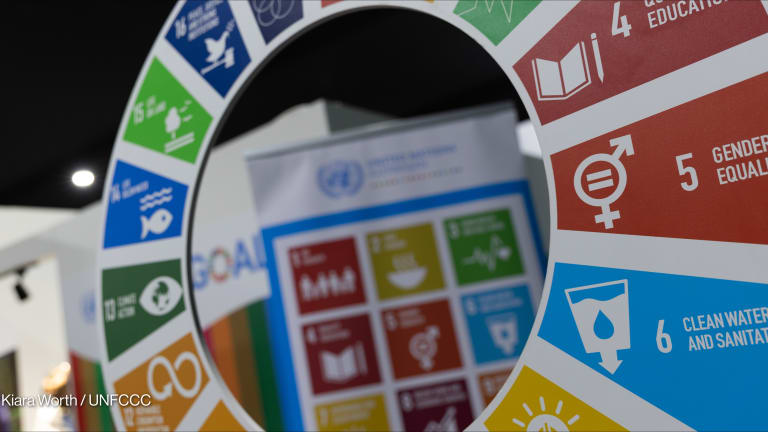
EDITOR’S NOTE: 2013 is going to be a big year for aid transparency, according to David Hall-Matthews, managing director of Publish What You Fund. One basis: It will see the first ministerial meeting of the new Global Partnership for Effective Development Cooperation.
Trying to predict the future is a mug’s game. No one can tell what events will overtake their best laid plans. But as the New Year gets into full swing, plenty of people are doing it anyway – and not (only) because there are a lot of mugs about.
If you are a government official, whether in Washington or Ougadougou, it is your job to make sure you allocate resources to deliver the best possible outcomes. This means you need to anticipate, with as much accuracy as possible, what others are going to do – but you’re likely to be stabbing in the dark.
This needn’t be the case. By the end of 2013, donor agencies and planners in partner countries could all have a good range of high quality information on each others’ existing and intended flows. That would be a huge benefit when they start to prepare their predictions of likely trends in 2014.
I’m going to risk making a prediction myself, and say that I believe 2013 will be the year that aid transparency actually starts to be delivered in a useful way. What I can predict with some confidence is that Publish What You Fund will continue to try to make this happen, specifically by furthering three aims:
More donors need to follow the lead of DFID and the World Bank and start to publish serious volumes of aid information to the International Aid Transparency Initiative (IATI) standard. The political commitment is there but, so far, not much information is. IATI’s comparable format will only come into its own when there are enough detailed publications to compare.
The quality of information needs to be far greater. Again, this is most likely to happen via a snowball effect. As more donors publish more types of information, in more useful formats and at greater frequency, so the data will be more useful. As the benefits and opportunities become apparent, more agencies are more likely to join in and start to generate and collect new information in order to make the most of the system.
Multiple tools need to be developed to make machine-readable IATI data accessible to citizens – of both developed and developing countries – in interactive, user-friendly formats. Individuals and campaign groups must be able to use aid information to hold people to account, from the United Nations to their local council.
So, what grounds are there for predicting that 2013 will be a critical year for aid transparency? First, it’s a big year for international forums, especially in the UK. The agenda for the UK-hosted G-8 will be based around transparency, alongside trade and tax. With the G-20 now the main forum for discussing strategies to boost the global economy, the G-8 has a chance to focus on what advanced economies can do to facilitate fairness and growth. Making sure its own practices are fully transparent would be a great place to start. It is crucial that aid is included in this.
Similarly, it would be good to see the Open Government Partnership, co-chaired this year by the UK and Indonesia, focus on open financial flows between nations, in addition to domestic accountability.
This year will also be critical in shaping the replacement for the Millennium Development Goals, after they reach their target date in 2015. We’re keen to see open data and open decision-making woven into the fabric of future goals and processes.
Last but not least, this year will see the first ministerial meeting of the new Global Partnership for Effective Development Cooperation (GPEDC). With transparency, equal collaboration and good practice sharing at its heart, we’re hoping it will blossom into a strong and well-used forum.
Optimism for the year ahead also makes sense when we consider how far aid transparency has come. IATI and Publish What You Fund are both less than five years old. The make-up of the IATI standard was agreed less than two years ago and this time last year only 15 agencies had published anything to it. With the U.S. posting its first data to the registry yesterday, there are now 106.
In addition, a common open standard for aid transparency was agreed at the High Level Forum on Aid Effectiveness in Busan at the end of 2011 and confirmed as a key focus of the GPEDC in June. This required all donors to produce implementation schedules, showing how they will fully implement their transparency pledges between now and 2015. Though not yet all delivered, these schedules will help campaigners to keep donors to their commitments to publish far more data in a timely, comparable and accessible format.
Turning transparency promises into reality is not always easy, and it takes time to update systems and convert data into comparable format. But the culture is changing. With sustained political will, 2013 can be the year of implementation, with the data in the IATI registry scaled up and used widely. And no need for development planners to keep stabbing in the dark.
Republished with permission from Publish What You Fund. Read the original article.








